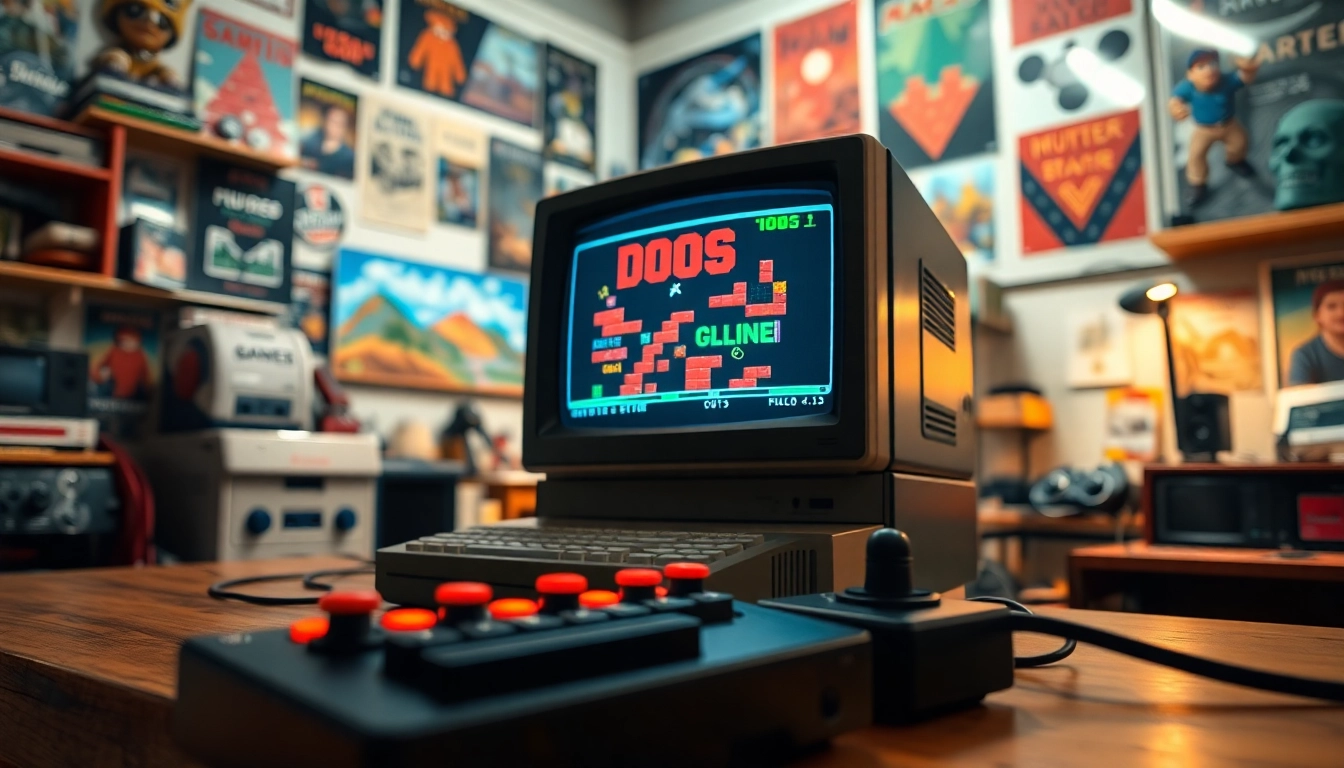Understanding the Dune 2 Game Mechanics
Overview of Gameplay Dynamics
Released in 1992, the dune 2 game established itself as a pivotal milestone in the real-time strategy genre. Developed by Westwood Studios, it introduced several mechanics that would become standard in future games. Players assume the role of a commander, tasked with building bases, managing resources, and leading armies to conquer enemies on the treacherous desert planet of Arrakis, known for its valuable spice melange.
The gameplay revolves around a straightforward objective: collect spice to fuel your operations and ultimately destroy enemy bases. The game integrates resource management, combat strategy, and territorial control, offering players a rich tapestry of decisions and tactics to engage with. Each faction presents unique abilities that influence how a player approaches each mission, providing varied experiences with each playthrough.
Key Resources: Spice and Power
Spice, the most coveted resource in Dune 2, serves as the lifeblood for any successful military campaign. Harvesting spice not only increases a player’s economy but also supports the building of units and structures. Players must navigate the desert landscape, using their harvesting vehicles while avoiding deadly sandworms and enemy attacks. Proper management of spice, therefore, becomes crucial to sustaining military production and achieving victory.
Power, represented through military strength and technological superiority, also plays a vital role. Gaining power entails investing in research to unlock advanced units and defenses, enabling players to develop more complex strategies. Understanding the balance between acquiring spice and enhancing military capabilities can dictate the flow of gameplay, requiring players to adapt their tactics based on the evolving state of the battlefield.
Faction Strengths and Weaknesses
In Dune 2, players can choose from three distinct factions: the noble House Atreides, the greedy House Harkonnen, and the cunning House Ordos. Each faction carries unique strengths and weaknesses, shaping strategies in gameplay.
- House Atreides: Known for advanced technology and versatile units, they excel in adaptability and defense strategies. However, their units tend to be weaker in terms of sheer firepower when compared to their rivals.
- House Harkonnen: These aggressive warriors wield formidable units that can overpower enemies swiftly. Yet, they often struggle with resource management and require significant spice to maintain their heavy armies.
- House Ordos: A sneakier choice, this faction utilizes unconventional tactics and deceitful units. Their agility allows for effective hit-and-run strategies, but they may lack the durability of stronger factions in direct confrontations.
Strategies for Success in Dune 2 Game
Early Game Tactics for Dominance
The early game in Dune 2 is crucial; establishing a robust resource collection strategy is essential. Players should prioritize expanding their base and ensuring efficient spice harvesting. Choosing the right location for base placement can lead to advantages; setting up near abundant spice fields can significantly enhance resource production.
Creating a variety of units early on allows for adaptive responses against potential threats. Combining infantry with light vehicles can create a balanced force capable of fending off early aggressors while still securing spice production. This early dominance can lead to a tactical advantage throughout the match.
Unit Management and Deployment
Effective unit management can often dictate the success of a player’s strategy. In Dune 2, grouping units into squads allows for more organized deployments and better synergy during battles. It’s vital to understand each unit’s strengths and flaws—ranged units can be used to pick off enemies from a distance, while heavily armored units should lead pushes into enemy territory.
Additionally, recognizing when to retreat can be just as critical as knowing when to advance. Sacrificing some units to maintain a strategic advantage or redirect forces to a more favorable position can lead to longer-term success. Balancing aggressive tactics with careful planning is a hallmark of strategic proficiency in the game.
Advanced Strategic Maneuvers
Once familiar with the game’s mechanics, players can begin developing more sophisticated strategies. Deceptive tactics can often outmaneuver opponents; for example, creating feints by attacking a weak point can draw enemy forces away from more crucial objectives. Recognizing patterns in enemy movements can help exploit their weaknesses, whether through ambushes or targeted strikes on their supply lines.
Utilizing terrain to an advantage is another hallmark of advanced gameplay. The varied landscape of Arrakis offers natural choke points and strategic locations that can greatly influence battles. Setting defenses in elevated areas or near spice fields to restrict enemy movement can create significant advantages.
Exploring the Unique Features of Dune 2 Game
The Impact of Terrain on Strategy
Arrakis is more than just a backdrop for combat; its terrain features greatly influence gameplay strategies. The desert landscape includes mountains, cliffs, and open dunes, each affecting movement and visibility. Players must not only consider distance when engaging enemies but also the natural obstacles present.
For instance, high ground often provides bonuses in combat scenarios, allowing units to attack with enhanced accuracy while reducing risks from incoming fire. Utilizing these terrain characteristics effectively can make a vast difference in strategy and outcomes for an engagement.
Game Environment and Its Challenges
In the Dune 2 universe, the environment poses unique challenges that players must mitigate. Sandworms, a formidable force of nature, can consume infantry and harvesting units indiscriminately, adding an element of unpredictability to resource collection. Players must learn to navigate the dangers of the environment, timing their harvesting activities to avoid these threats.
Additionally, managing troop morale and health is crucial. Units that suffer from continuous engagements without retreat may decrease in effectiveness over time, leading to costly defeats. Balancing offensive maneuvers with adequate rest and recuperation of troops can prepare a player for prolonged conflicts.
Multiplayer vs. Single Player: Differences
The experience of Dune 2 can drastically change based on the gaming mode. In single-player campaigns, players will face scripted missions with unique challenges and enemies. These missions are designed to provide a narrative arc and testing grounds to refine strategies. While challenging, the predictability of AI strategies can allow players to devise counter-strategies effectively.
Conversely, multiplayer matches introduce an unpredictable and dynamic component. Here, human players offer varied tactics and behaviors that can defy expectations. Adapting to real-time decisions made by opponents pushes players to think creatively on their feet, testing their limits and enhancing their understanding of the game intricacies.
Common Challenges Players Face in Dune 2 Game
Resource Management Issues
Managing resources efficiently is a common hurdle in Dune 2. Players need to balance collection and expenditure carefully; overextending resources can lead to an inability to maintain units and defenses. Ensuring timely retrieval of spice while preventing enemy harassment is vital. Developing a streamlined collecting process, including the use of multiple harvesters, may mitigate these issues.
Identifying the right time to invest accumulated resources into new units or fortifications is equally crucial. Recognizing when the enemy is weak or vulnerable can dictate whether to focus on expansion or defend against incoming threats.
Gameplay Pace and Timing
The pace of gameplay can feel overwhelming at times, especially during intense battles. Players must learn when to act aggressively and when to regroup. Losing track of time during a critical engagement can lead to missed opportunities or damaging losses.
Incorporating a systematic approach to decision-making can assist in maintaining an optimal pace. Establishing clear short-term objectives, while not overlooking the longer-term strategies, can prevent players from feeling rushed or disorganized during gameplay.
Navigating Enemy Strategies
Each opponent in Dune 2 can embody a unique playstyle and strategic preferences. Understanding and adapting to these can provide a significant advantage. Players should analyze enemy movements and tactics to develop counterstrategies; knowing when an enemy is likely to aggress can help prepare defenses or launch a successful counter-offensive.
As the game progresses, maintaining flexibility in your own strategies while being observant of opponents’ developments becomes increasingly vital. By recognizing common patterns and adjusting accordingly, players can ensure they stay one step ahead.
Future of Dune 2 Game: Community and Remakes
Fan-Made Content and Mods
The enduring legacy of Dune 2 has cultivated a passionate community that continues to create fan-made content and mods. From enhanced graphics to completely new factions, these modifications breathe new life into the classic gameplay experience. Engaging with community-driven projects can provide fresh perspectives and enhancements that extend the game’s life and keep it relevant.
These mods often reflect players’ desire for innovation while holding true to the core gameplay mechanics, allowing both veterans and newcomers to explore new avenues of strategy within the familiar context of the game.
Remakes and Continuations of the Dune Legacy
Commercial interest in the Dune franchise has led to several remakes and spin-offs over the years. These titles often build upon the foundational mechanics established in the original Dune 2, enhancing gameplay with modern techniques, graphics, and storytelling. Engaging with these new iterations can serve to enlighten long-time fans about the changes in gaming trends while remaining nostalgic about the elements that originally captured their attention.
Engaging with the Dune 2 Game Community
For players seeking to deepen their engagement with Dune 2, participating in online forums, fan communities, or even local meets can enhance their gaming experience. Sharing strategies, discussing challenges, and participating in community-run tournaments can foster friendships and knowledge sharing among players with varying skill levels.
Being an active participant in such communities can also help players develop their skills, learn new strategies, and remain updated on the evolving landscape of the Dune franchise.







Leave a Reply